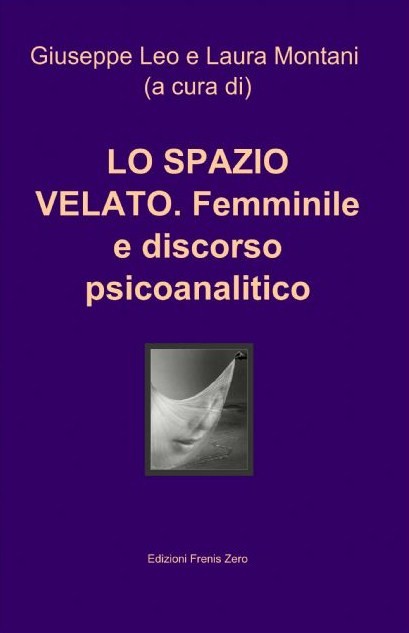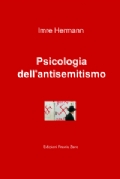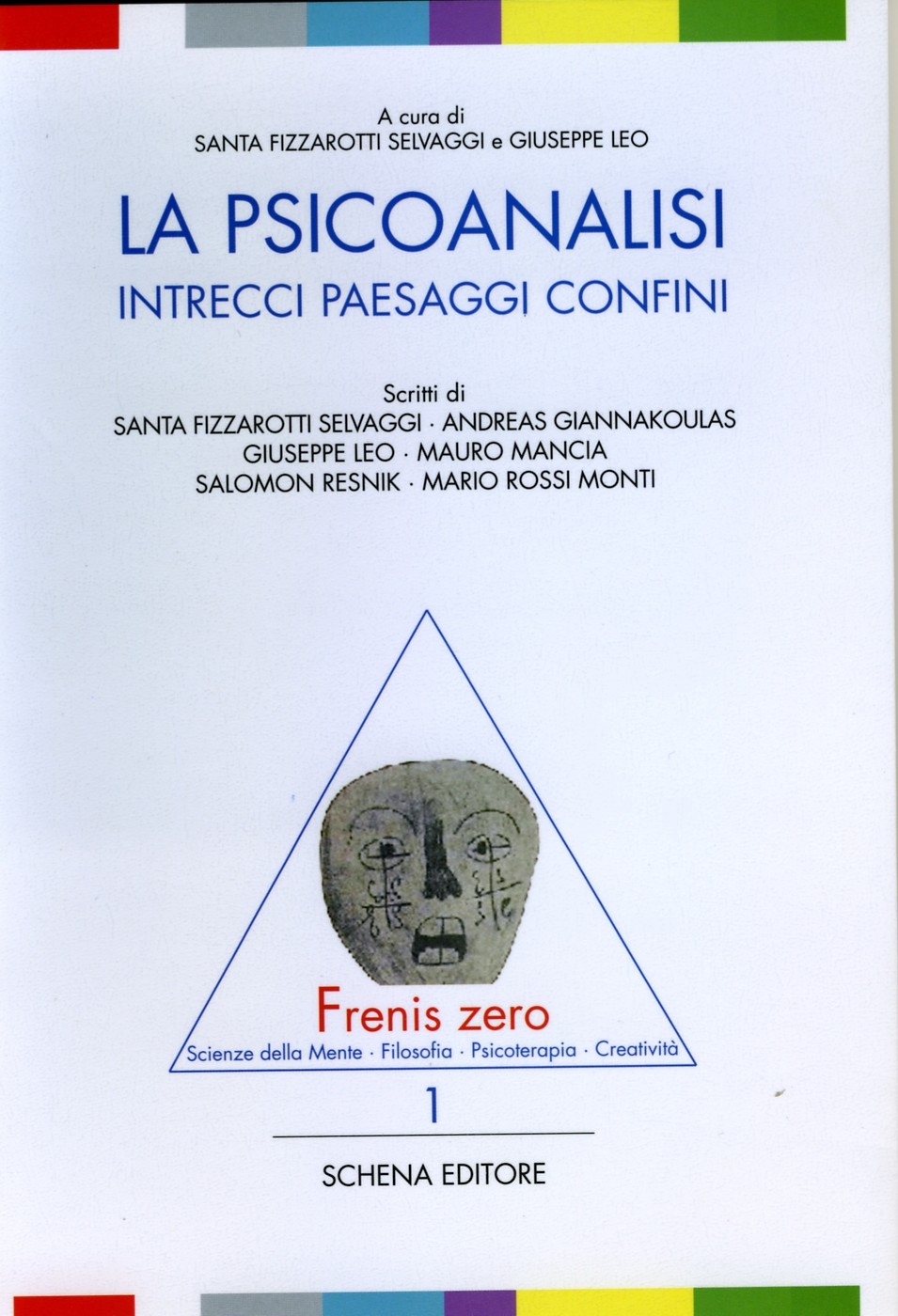BIBLIOGRAFIA
1. Goodyer
IM, Herbert J, Tamplin A, Altham PM: First-episode
major depression in adolescents. Affective, cognitive and
endocrine characteristics of risk status and predictors of onset.
Br
J Psychiatry 2000, 176:142-149. PubMed Abstract | Publisher Full Text ![OpenURL]()
2. Kendler
KS, Karkowski LM, Prescott CA: Causal
relationship between stressful life events and the onset of
major depression.
Am
J Psychiatry 1999, 156:837-841. PubMed Abstract | Publisher Full Text 
3. Lewinsohn
PM, Allen NB, Seeley JR, Gotlib IH: First
onset versus recurrence of depression: Differential processes of
psychosocial risk.
Journal
of Abnormal Psychology 1999, 108:483-489. PubMed Abstract | Publisher Full Text ![OpenURL]()
4. Kendler
KS, Thornton LM, Gardner CO: Stressful
life events and previous episodes in the etiology of major
depression in women: an evaluation of the "kindling"
hypothesis.
Am
J Psychiatry 2000, 157:1243-1251. PubMed Abstract | Publisher Full Text ![OpenURL]()
5. Post
RM: Transduction
of psychosocial stress into the neurobiology of recurrent
affective disorder.
Am
J Psychiatry 1992, 149:999-1010. PubMed Abstract | Publisher Full Text ![OpenURL]()
6. Harrington
R, Dubicka B: Natural
history of mood disorders in children and adolescents. In The
depressed child and adolescent. Edited by Goodyer I.
Cambridge:: Cambridge University Press; 2001:311-343.![OpenURL]()
7. Halperin
JM, Rucklidge JJ, Powers RL, Miller CJ, Newcorn JH: Childhood
CBCL bipolar profile and adolescent/young adult personality
disorders: A 9-year follow-up.
J
Affect Disord 2010, 130:155-161. PubMed Abstract | Publisher Full Text ![OpenURL]()
8. Rudolph
KD, Klein DN: Exploring
depressive personality traits in youth: origins, correlates, and
developmental consequences.
Dev
Psychopathol 2009, 21:1155-1180. PubMed Abstract | Publisher Full Text | PubMed Central Full Text ![OpenURL]()
9. Harrington
R, Clark A: Prevention
and early intervention for depression in adolescence and early
adult life.
Eur
Arch Psychiatry Clin Neurosci 1998, 248:32-45. PubMed Abstract | Publisher Full Text ![OpenURL]()
10. Knapp
M, McCrone P, Fombonne E, Beecham J, Wostear G: The
Maudsley long-term follow-up of child and adolescent depression:
3. Impact of comorbid conduct disorder on service use and costs
in adulthood.
Br
J Psychiatry 2002, 180:19-23. PubMed Abstract | Publisher Full Text ![OpenURL]()
11. McCrone
P, Dhanasiri S, Patel A, Knapp M, Lawton-Smith S: Paying
the price: The cost of mental health in England to 2026.
London: King's Fund; 2008. ![OpenURL]()
12. Harrington
R, Fudge H, Rutter M, Pickles A, Hill J: Adult
outcomes of childhood and adolescent depression. I. Psychiatric
status.
Arch
Gen Psychiatry 1990, 47:465-473. PubMed Abstract | Publisher Full Text ![OpenURL]()
13. Goodyer
IM, Dubicka B, Wilkinson P, Kelvin R, Roberts C, Byford S, Breen
S, Ford C, Barrett B, Leech A, et
al.:A
randomised controlled trial of cognitive behaviour therapy in
adolescents with major depression treated by selective serotonin
reuptake inhibitors. The ADAPT trial.
Health
Technol Assess 2008, 12:1-80. PubMed Abstract | Publisher Full Text ![OpenURL]()
14. Weersing
VR, Iyengar S, Kolko DJ, Birmaher B, Brent DA: Effectiveness
of cognitive-behavioral therapy for adolescent depression: a
benchmarking investigation.
Behav
Ther 2006, 37:36-48. PubMed Abstract | Publisher Full Text ![OpenURL]()
15. Clarke
G, Debar L, Lynch F, Powell J, Gale J, O'Connor E, Ludman E,
Bush T, Lin EH, Von Korff M, Hertert S: A
randomized effectiveness trial of brief cognitive-behavioral
therapy for depressed adolescents receiving antidepressant
medication.
J
Am Acad Child Adolesc Psychiatry 2005, 44:888-898. PubMed Abstract | Publisher Full Text ![OpenURL]()
16. March
J, Silva S, Petrycki S, Curry J, Wells K, Fairbank J, Burns B,
Domino M, McNulty S, Vitiello B, Severe J:Fluoxetine,
cognitive-behavioral therapy, and their combination for
adolescents with depression: Treatment for Adolescents With
Depression Study (TADS) randomized controlled trial.
JAMA 2004, 292:807-820. PubMed Abstract | Publisher Full Text ![OpenURL]()
17. Emslie
GJ, Mayes T, Porta G, Vitiello B, Clarke G, Wagner KD, Asarnow
JR, Spirito A, Birmaher B, Ryan N, et
al.:Treatment
of Resistant Depression in Adolescents (TORDIA): week 24
outcomes.
Am
J Psychiatry 2010, 167:782-791. PubMed Abstract | Publisher Full Text ![OpenURL]()
18. Dubicka
B, Elvins R, Roberts C, Chick G, Wilkinson P, Goodyer IM: Combined
treatment with cognitive-behavioural therapy in adolescent
depression: meta-analysis.
Br
J Psychiatry 2010, 197:433-440. PubMed Abstract | Publisher Full Text ![OpenURL]()
19. Dunn
V, Goodyer IM: Longitudinal
investigation into childhood- and adolescence-onset depression:
psychiatric outcome in early adulthood.
Br
J Psychiatry 2006, 188:216-222. PubMed Abstract | Publisher Full Text ![OpenURL]()
20. Gerber
AJ, Kocsis JH, Milrod BL, Roose SP, Barber JP, Thase ME, Perkins
P, Leon AC: A
quality-based review of randomized controlled trials of
psychodynamic psychotherapy.
Am
J Psychiatry 2011, 168:19-28. PubMed Abstract | Publisher Full Text ![OpenURL]()
21. Shedler
J: The
efficacy of psychodynamic psychotherapy.
American
Psychologist 2010, 65:98-109. PubMed Abstract | Publisher Full Text ![OpenURL]()
22. Abbass
AA, Hancock JT, Henderson J, Kisely S: Short-term
psychodynamic psychotherapies for common mental disorders.
Cochrane
Database Syst Rev 2006,
CD004687. ![OpenURL]()
23. de
Maat S, Dekker J, Schoevers R, van Aalst G, Gijsbers-van Wijk C,
Hendriksen M, Kool S, Peen J, Van R, de Jonghe F: Short
psychodynamic supportive psychotherapy, antidepressants, and
their combination in the treatment of major depression: a
mega-analysis based on three randomized clinical trials.
Depress
Anxiety 2008, 25:565-574. PubMed Abstract | Publisher Full Text ![OpenURL]()
24. Driessen
E, Cuijpers P, de Maat SC, Abbass AA, de Jonghe F, Dekker JJ: The
efficacy of short-term psychodynamic psychotherapy for
depression: a meta-analysis.
Clin
Psychol Rev 2010, 30:25-36. PubMed Abstract | Publisher Full Text ![OpenURL]()
25. Leichsenring
F, Rabung S, Leibing E: The
efficacy of short-term psychodynamic psychotherapy in specific
psychiatric disorders: a meta-analysis.
Arch
Gen Psychiatry 2004, 61:1208-1216. PubMed Abstract | Publisher Full Text ![OpenURL]()
26. Kennedy
E: [http://www.nscap.org.uk] webcite
Child
and Adolescent Psychotherapy: A systematic Review of
Psychoanalytic Approaches. London: North Central
London SHA; 2004. ![OpenURL]()
27. Target
M, Fonagy P: Efficacy
of psychoanalysis for children with emotional disorders.
J
Am Acad Child Adolesc Psychiatry 1994, 33:361-371. PubMed Abstract | Publisher Full Text ![OpenURL]()
28. Trowell
J, Joffe I, Campbell J, Clemente C, Almqvist F, Soininen M,
Koskenranta-Aalto U, Weintraub S, Kolaitis G, Tomaras V, et
al.: Childhood
depression: a place for psychotherapy. An outcome study
comparing individual psychodynamic psychotherapy and family
therapy.
Eur
Child Adolesc Psychiatry 2007, 16:157-167. PubMed Abstract | Publisher Full Text ![OpenURL]()
29. Garoff
FF, Heinonen K, Pesonen A-K, Almqvist F: Depressed
youth: treatment outcome and changes in family functioning in
individual and family therapy.
Journal
of Family Therapy 2011.
epub,
March 14th
![OpenURL]()
30. Horn
H, Geiser-Elze A, Reck C, Hartmann M, Stefini A, Victor D,
Winkelmann K, Kronmuller KT: Efficacy
of psychodynamic short-term psychotherapy for children and
adolescents with depression.
Prax
Kinderpsychol Kinderpsychiatr 2005, 54:578-597. PubMed Abstract ![OpenURL]()
31. Kelvin
R, Wilkinson P, Goodyer I: Managing
Acute Depressive Episodes: Putting it Together in Parctice. In Treating
Child and Adolescent Depression. Edited by Birmaher
B, Rey J. Philadelphia, USA: Lippincott, Williams and Wilkins;
2009:162-173. ![OpenURL]()
32. Goodyer
I, Dubicka B, Wilkinson P, Kelvin R, Roberts C, Byford S, Breen
S, Ford C, Barrett B, Leech A, et
al.:Selective
serotonin reuptake inhibitors (SSRIs) and routine specialist
care with and without cognitive behaviour therapy in adolescents
with major depression: randomised controlled trial.
BMJ 2007, 335:142. PubMed Abstract | Publisher Full Text | PubMed Central Full Text ![OpenURL]()
33. Gunlicks-Stoessel
M, Mufson L, Jekal A, Turner JB: The
impact of perceived interpersonal functioning on treatment for
adolescent depression: IPT-A versus treatment as usual in
school-based health clinics.
J
Consult Clin Psychol 2010, 78:260-267. PubMed Abstract | Publisher Full Text | PubMed Central Full Text ![OpenURL]()
34. Angold
A, Costello EJ, Pickles A, Winder F: The
development of a questionnaire for use in a epidemiological
studies in children and adolescents.
The
development of a questionnaire for use in a epidemiological
studies in children and adolescents MRC Child Psychiatry
Research Unit 1987. ![OpenURL]()
35. Busch
F, Rudden M, Shapiro T: Psychodynamic
Treatment of Depression. Washington: American
Psychiatric Association; 2004. ![OpenURL]()
36. Target
M, Fonagy P: Anna
Freud Centre studies 3: The long-term follow-up of child
analytic treatments (AFC3). In An
open door review of outcome studies in psychoanalysis (2nd ed),
(141-146). Edited by Fonagy P. London: International
Psychoanalytic Association; 2002:141-146. ![OpenURL]()
37. Kaufman
J, Birmaher B, Brent D, Rao U, Flynn C, Moreci P, Williamson D,
Ryan N: Schedule
for Affective Disorders and Schizophrenia for School-Age
Children Present and Lifetime version (K-SADS-PL): Initial
reliability and validity data.
J
Am Acad Child Psy 1997, 36:980-988. Publisher Full Text ![OpenURL]()
38. Posner
K, Oquendo MA, Gould M, Stanley B, Davies M: Columbia
Classification Algorithm of Suicide Assessment (C-CASA):
classification of suicidal events in the FDA's pediatric
suicidal risk analysis of antidepressants.
Am
J Psychiatry 2007, 164:1035-1043. PubMed Abstract | Publisher Full Text ![OpenURL]()
39. Gowers
S, Levine W, Bailey-Rogers S, Shore A, Burhouse E: Use
of a routine, self-report outcome measure (HoNOSCA-SR) in two
adolescent mental health services. Health of the Nation Outcome
Scale for Children and Adolescents.
Br
J Psychiatry 2002, 180:266-269. PubMed Abstract | Publisher Full Text ![OpenURL]()
40. Zanarini
MC: Zanarini
Rating Scale for Borderline Personality Disorder (ZAN-BPD): A
continuous measure of DSM-IV borderline psychopathology.
J
Pers Disord 2003, 17:233-242. PubMed Abstract | Publisher Full Text ![OpenURL]()
41. Guy
W, Ed: ECDEU
Assessment Manual for Psychopharmacology. 1976.
Rockville
MD: US Depratment of Health, Education and Welfare ![OpenURL]()
42. Department
of Health
NHS
Reference costs HMSO 2004. ![OpenURL]()
43. Barrett
B, Byford S, Chitsabesan P, Kenning C: Mental
health provision for young offenders: service use and cost.
The
British Journal of Psychiatry 2006, 188:541-546. PubMed Abstract | Publisher Full Text ![OpenURL]()
44. American
Psychiatric Association (1994). Diagnostic and statistical
manual of mental health disorders (4th ed) Washington
DC: Author;
45. Bamber
D, Tamplin A, Park RJ, Kyte ZA, Goodyer IM: Development
of a short leyton obsessional inventory for children and
adolescents.
J
Am Acad Child Adolesc Psychiatry 2002, 41:1246-1252. PubMed Abstract | Publisher Full Text ![OpenURL]()
46. Reynolds
C, Paget K: National
normative and reliability data for the Revised Children's
Manifest Anxiety Scale.
School
Psychology Review 1983, 12:324-336. ![OpenURL]()
47. Nolen-Hoeksema
S: Responses
to depression and their effects on the duration of depressive
episodes.
J
Abnorm Psychol 1991, 100:569-582. PubMed Abstract | Publisher Full Text ![OpenURL]()
48. Vrouva
I, Fonagy P, Fearon PR, Roussow T: The
risk-taking and self-harm inventory for adolescents: development
and psychometric evaluation.
Psychol
Assess 2010, 22:852-865. PubMed Abstract | Publisher Full Text ![OpenURL]()
49. Blumberg
SH, Izard CE: Discriminating
patterns of emotions in 10- and 11-year-old children's anxiety
and depression.
J
Pers Soc Psychol 1986, 51:852-857. PubMed Abstract | Publisher Full Text ![OpenURL]()
50. Fichman
L, Koestner R, Zuroff DC: Depressive
Styles in Adolescence - Assessment, Relation to Social
Functioning, and Developmental-Trends.
J
Youth Adolescence 1994, 23:315-330. Publisher Full Text ![OpenURL]()
51. Teasdale
JD, Cox SG: Dysphoria:
self-devaluative and affective components in recovered depressed
patients and never depressed controls.
Psychol
Med 2001, 31:1311-1316. PubMed Abstract ![OpenURL]()
52. Elgar
F, Waschbusch D, Dadds M, Sigvaldason N: Development
and Validation of a Short Form of the Alabama Parenting
Questionnaire.
Journal
of Child and Family Studies 2007, 16:243-259. Publisher Full Text ![OpenURL]()
53. Costa
PT, McCrae RR: Normal
personality assessment in clinical practice: The NEO Personality
Inventory.
Psychological
Assessment 1992, 4:5-13. ![OpenURL]()
54. Brooks
R: EuroQol:
the current state of play.
Health
Policy 1996, 37:53-72. PubMed Abstract | Publisher Full Text ![OpenURL]()
55. Goodyer
IM, Wright C, Altham PM: Recent
friendships in anxious and depressed school age children.
Psychol
Med 1989, 19:165-174. PubMed Abstract | Publisher Full Text ![OpenURL]()
56. Derogatis
LR, Lipman RS, Covi L: SCL-90:
an outpatient psychiatric rating scale--preliminary report.
Psychopharmacol
Bull 1973, 9:13-28. PubMed Abstract ![OpenURL]()
57. Tracey
TJ, Kokotovic AM: Factor
Structure of the Working Alliance Inventory.
Psychological
Assessment 1989, 1:207-210. ![OpenURL]()
58. Target
M, Fonagy P: Raters'
manual for the Hampstead Child Adaptation Measure (HCAM).
London, UCL; 1992. PubMed Abstract | Publisher Full Text ![OpenURL]()
59. Epstein
NB, Baldwin LM, Bishop DS: The
McMaster Family Assessment Device*.
Journal
of Marital and Family Therapy 1983, 9:171-180. Publisher Full Text ![OpenURL]()
60. Guazzo
EP, Kirkpatrick PJ, Goodyer IM, Shiers HM, Herbert J: Cortisol,
dehydroepiandrosterone (DHEA), and DHEA sulfate in the
cerebrospinal fluid of man: relation to blood levels and the
effects of age.
J
Clin Endocrinol Metab 1996, 81:3951-3960. PubMed Abstract | Publisher Full Text ![OpenURL]()
61. Goodyer
IM, Park RJ, Herbert J: Psychosocial
and endocrine features of chronic first-episode major depression
in 8-16 year olds.
Biol
Psychiatry 2001, 50:351-357. PubMed Abstract | Publisher Full Text ![OpenURL]()
62. Fallucca
E, Macmaster FP, Haddad J, Easter P, Dick R, May G, Stanley JA,
Rix C, Rosenberg DR:Distinguishing
between major depressive disorder and obsessive-compulsive
disorder in children by measuring regional cortical thickness.
Arch
Gen Psychiatry 2011, 68:527-533. PubMed Abstract | Publisher Full Text ![OpenURL]()
63. Farb
NA, Anderson AK, Bloch RT, Segal ZV: Mood-Linked
Responses in Medial Prefrontal Cortex Predict Relapse in
Patients with Recurrent Unipolar Depression.
Biol
Psychiatry 2011. ![OpenURL]()
64. Cohen
J: Statistical
analysis of behavioural sciences. Hillsdale, New
Jersey: Lowrence Erlbaum Associates; 1988. ![OpenURL]()
65. McCullagh
P: Regression
models for ordinal data.
J
Roy Stat Soc 1980, 43:109-142. ![OpenURL]()
66. Drummond
M, O'Brien B, Stoddart G: Methods
for the Evaluation of Health Care Programmes.
Oxford: Oxford University Press; 2005. ![OpenURL]()
67. Curtis
L, Netten A: Unit
costs of Health and Social care.
Personal
Social Services Research Unit 2004. ![OpenURL]()
68. Koopmanschap
MA, van Ineveld BM: Towards
a new approach for estimating indirect costs of disease.
Soc
Sci Med 1992, 34:1005-1010. PubMed Abstract | Publisher Full Text ![OpenURL]()
69. Van
Hout BA, Al MJ, Gordon GS, Rutten FFH: Costs,
effects and C/E-ratios alongside a clinical trial.
Health
Economics 1994, 3:309-319. PubMed Abstract | Publisher Full Text ![OpenURL]()
70. Efton
B, Tibishirani R: An
introduction to the bootstrap. New York: Chapman
& Hall 1993; 1993. ![OpenURL]()
71. Fenwick
E, Claxton K, Sculpher M: Representing
uncertainty: the role of cost-effectiveness acceptability curves.
Health
Econ 2001, 10:779-787. PubMed Abstract | Publisher Full Text ![OpenURL]()
72. Wilkinson
P, Dubicka B, Kelvin R, Roberts C, Goodyer I: Treated
depression in adolescents: predictors of outcome at 28 weeks.
Br
J Psychiatry 2009, 194:334-341. PubMed Abstract | Publisher Full Text ![OpenURL]()
73. Wilkinson
P, Kelvin R, Roberts C, Dubicka B, Goodyer I: Clinical
and Psychosocial Predictors of Suicide Attempts and Nonsuicidal
Self-Injury in the Adolescent Depression Antidepressants and
Psychotherapy Trial (ADAPT).
Am
J Psychiatry 2011, 168:495-501. PubMed Abstract | Publisher Full Text ![OpenURL]()
74. Laje
G, McMahon FJ: Genome-wide
association studies of antidepressant outcome: A brief review.
Prog
Neuropsychopharmacol Biol Psychiatry 2010,
in press. ![OpenURL]()
75. Brent
D, Melhem N, Ferrell R, Emslie G, Wagner KD, Ryan N, Vitiello B,
Birmaher B, Mayes T, Zelazny J, et
al.:Association
of FKBP5 Polymorphisms With Suicidal Events in the Treatment of
Resistant Depression in Adolescents (TORDIA) Study.
Am
J Psychiatry 2010, 167:190-197. PubMed Abstract | Publisher Full Text | PubMed Central Full Text





